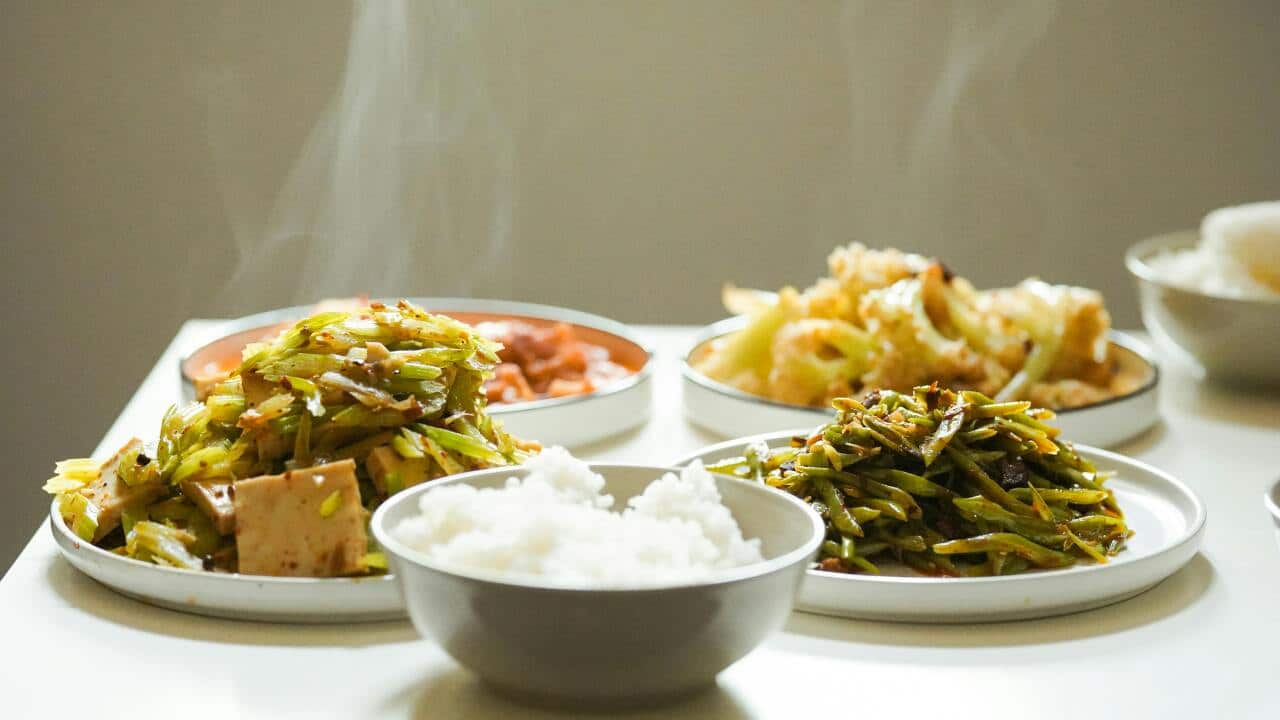Key Points
- Pansit Malabon, thick rice noodles topped with a yellow-orange sauce and lots of seafood, is a staple in Pinoy tables.
- The original dish didn’t use noodles, but bamboo shoots.
- Yolalia Delos Santos, a Malabon native, is credited as the one who invented the original pansit labong recipe in the 1880s.
Listen to the podcast

Palabok vs. Luglug vs. Malabon vs. Ispabok; Which Filipino pansit dish takes the spotlight?
SBS Filipino
25/10/202421:31
Pansit Malabon, thick rice noodles topped with a yellow-orange sauce and lots of seafood, is a staple in Pinoy tables; but how did this favourite come to be?
History began in the urbanised city of Malabon located in the National Capital Region in the Philippines.
In the old days, during the Spanish colonial era, a name that reflects its land where plants like tambo (tiger grass) and labong (bamboo shoots) thrived.
However, as Spanish friars began visiting Tambobong as a favoured retreat, the town's name evolved into 'Malabon'.
Derived from the words "mala" (mud) and "bon" (from buen meaning good or fresh air), Mala-buen, or Malabon, captured the area's unique environment.
Another version of the etymology of Malabon suggests that it comes from 'madaming labong' (abundant bamboo shoots), reflecting the town’s wealth of edible bamboo.
Interestingly, labong plays a significant role in the origin story of pansit Malabon, as the original dish didn’t use noodles, but bamboo shoots.
The original pansit Malabon consisted of julienned bamboo shoots, mixed with fish sauce, garlic, pepper, calamansi, topped with duck eggs (itlog ng itik was preferred, as its egg yolk held in place more than chicken eggs), oysters, squid and tampalen (taba ng baboy). It was less of a noodle dish and more a vegetable one.
Yolalia Delos Santos, a Malabon native, is credited as the one who invented the original pansit labong recipe in the 1880s.
Over time, Delos Santos’ descendants added tweaks here and there, including replacing the labong with rice noodles and adding the yellow-orange sauce made from annatto or atsuete seeds, shrimp stock, and crab fat.
True to its roots, Pansit Malabon is abundantly topped with an assortment of seafood, such as mussels, oysters, squid, smoked bangus, and shrimps, reflecting the town’s coastal location. Besides being known for its labong, Malabon has access to a wide variety of fresh seafood, which is a key element in the dish’s rich flavor.
These days, Malabonians have added more than tampalen to the dish, with a popular pansit Malabon original, Rosy’s Pansit Malabon, adding ox tongue or beef tongue as toppings.
In the 1900s, Manileños, particularly Filipino movie stars, discovered Pansit Malabon while passing through the area. They enjoyed it as a snack during filming and were the ones who began calling the unique noodle dish "Pansit Malabon.”
For lovers of the noodle dish, there’s nothing like the sight of a plateful of pansit Malabon with its lovely orange colour, heaping with seafood, and the promise of a delicious meal. Pansit Malabon is tasty on its own, and can be enjoyed with Filipino barbecue, puto (putong puti or white rice cake), and fried and crispy tokwa, as what Chef Joy Magbitang shared.
However much the recipe varies from Malabon to other cities, in Filipino communities around the world. from one Malabonian family to another, one thing remains the same: and that’s the rich history and cultural heritage that reflect in every Pansit Malabon served and eaten.










